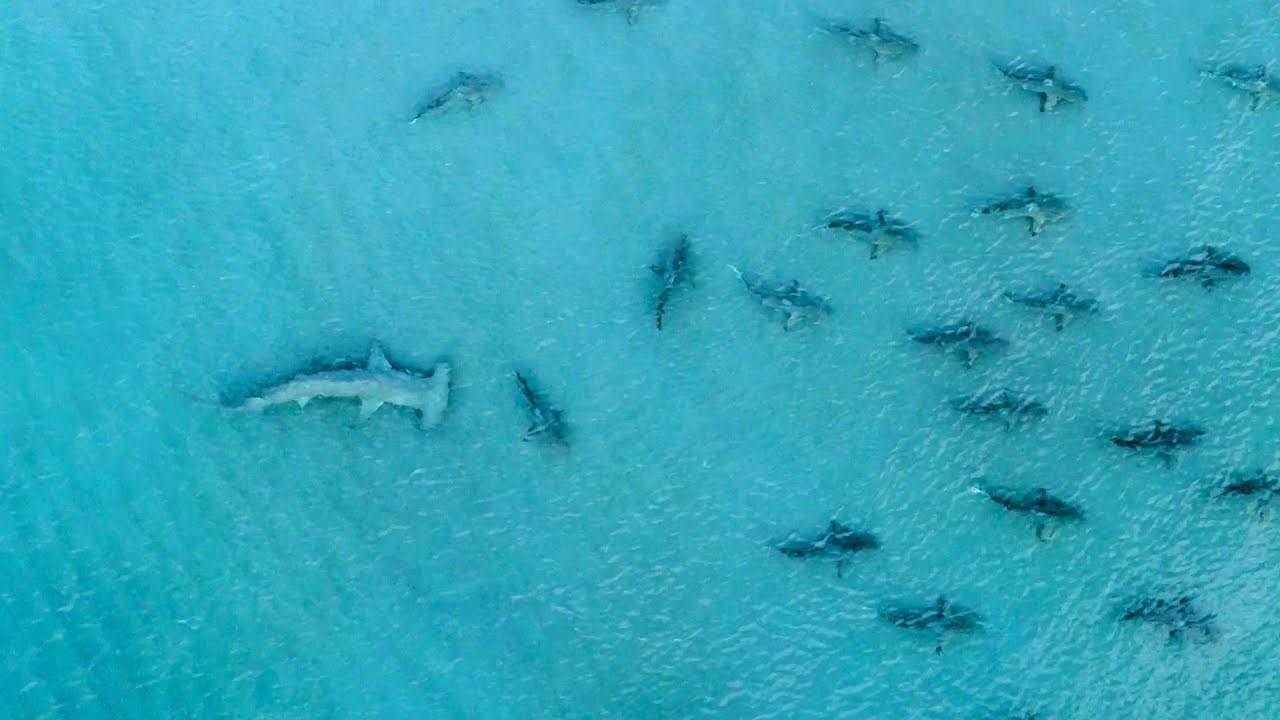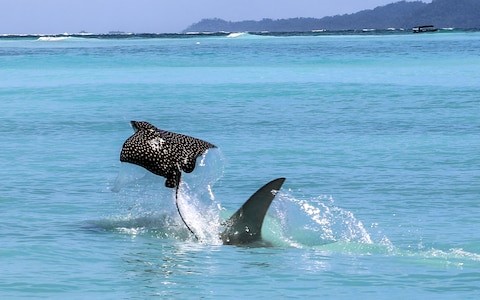Source: Australian Geographic
IUCN status: endangered
Size: up to 6m
Easily identified by its broad, flat head, this large shark is found in northern Australian waters from Sydney to the Houtman Abrolhos, WA. While few attacks on humans have been recorded, the great hammerhead is considered dangerous. It feeds on fish, other sharks, crustaceans and cephalopods, but is best known for its appetite for rays, which it pins to the sea floor with its head before taking a bite out of the ray’s wing, incapacitating it.
The shark has a greater surface area over which its Ampullae of Lorenzini are distributed, making it particularly receptive to electric impulses emitted by other animals as well as by the earth (allowing it to navigate despite a possible lack of visibility). Hammerheads tend to stick to the ocean floor, sometimes hunting in large packs of over 100 sharks during the daylight hours. However, at night, they hunt alone.
 Hunting black tip reef sharks
Hunting black tip reef sharks
Hammerhead Sharks, like humans, give birth to live young that have been sustained in the uterus . This is called viviparity in the case of sharks. A Hammerhead Shark was the first shark known to demonstrate asexual reproduction (where a female produced young without the input of a male).
In addition, they are one of the few animals, along with pigs and human beings, that can suntan as their skin becomes darker with increased exposure to harmful rays when swimming close to the water’s surface.
Its vertebrae display a rather different structure to those of other sharks, and it is believed that this plays a major role in their abilitity to manoeuvre as quickly and accurately as they do. The hammer shape of the head provides extra lift, making these sharks some of the most buoyant alive. Their eyes are positioned far apart, allowing for a 360-degree view of their surroundings, as are their nostrils, increasing their range of smell.
The skin of a shark is very unique in that it is covered in a tooth like structure called dermal denticles, and Hammerhead sharks are no exception. Hammerheads have ridges on the crowns of their dermal denticles which help lead scented water to its nostrils, that helps them easily smell their prey. With their sensory organs to pick up on a sting ray’s electrical pulses, they are the perfect predator for a sting ray. They use these advantages to swim directly above the ocean floor, swaying its head side to side like a sting ray metal detector.

Hammerheads hunting rays in Panama
